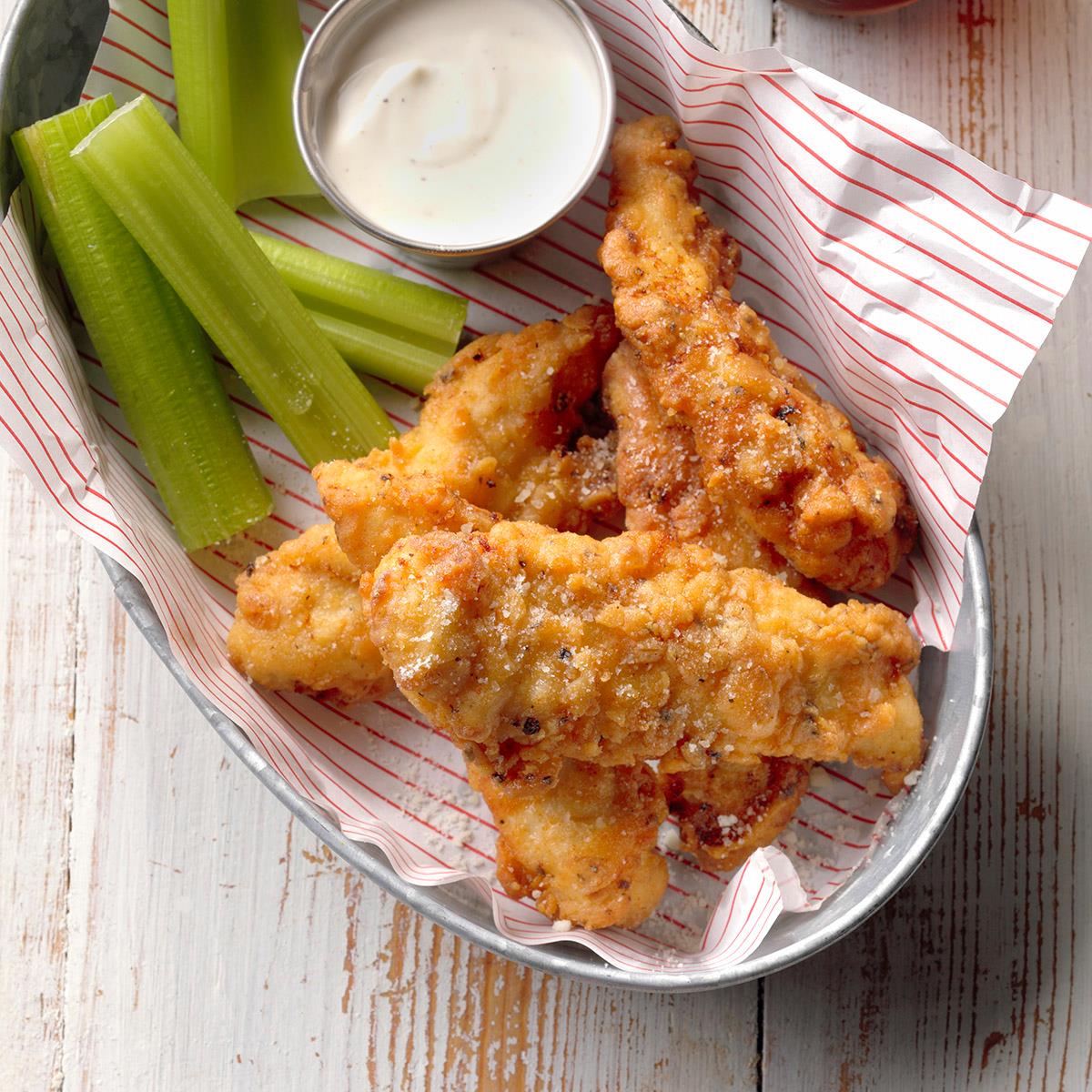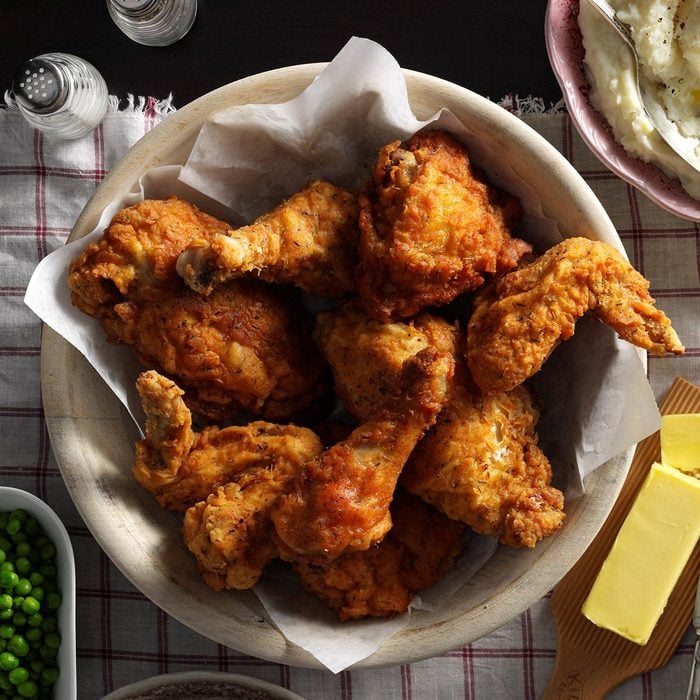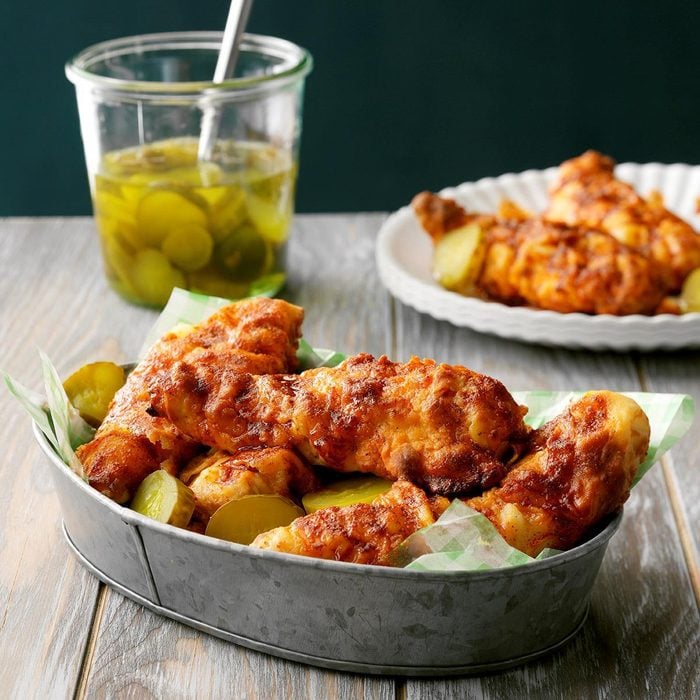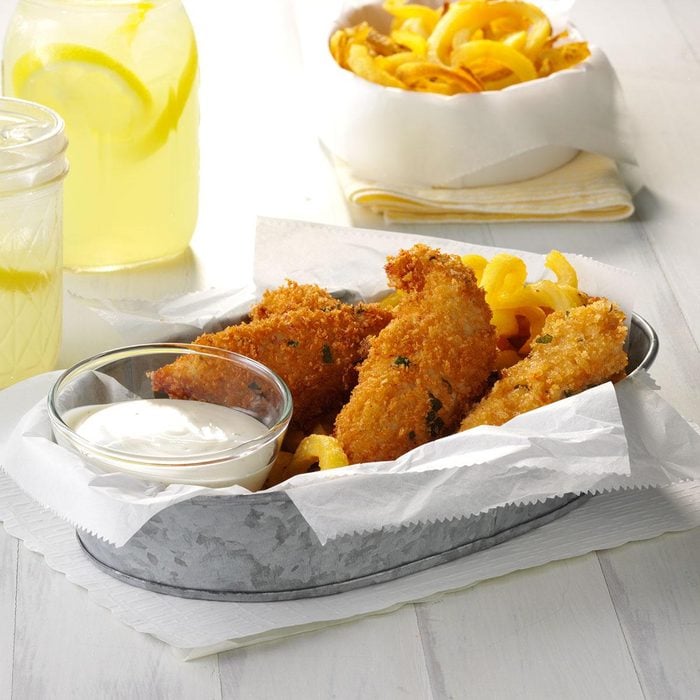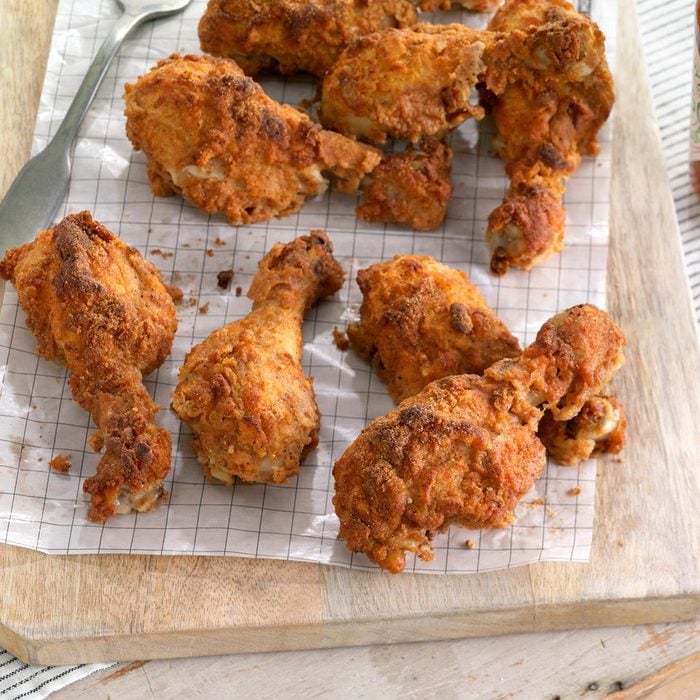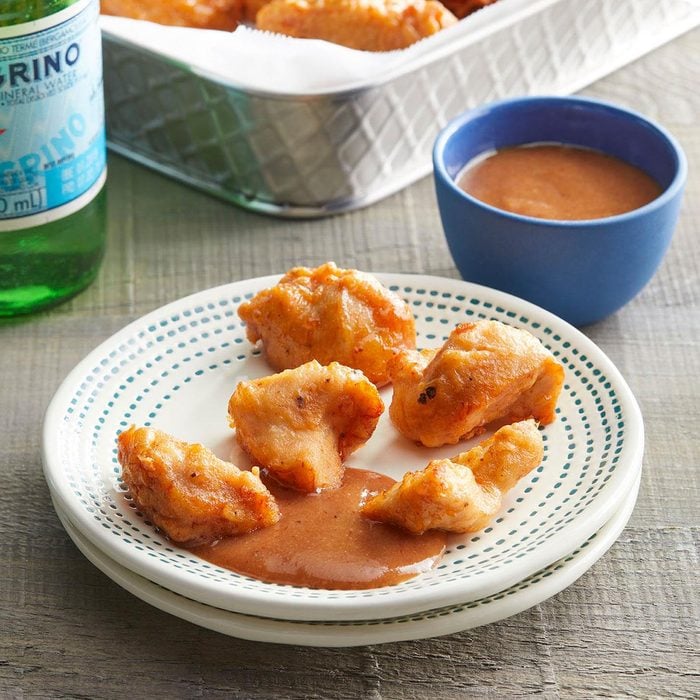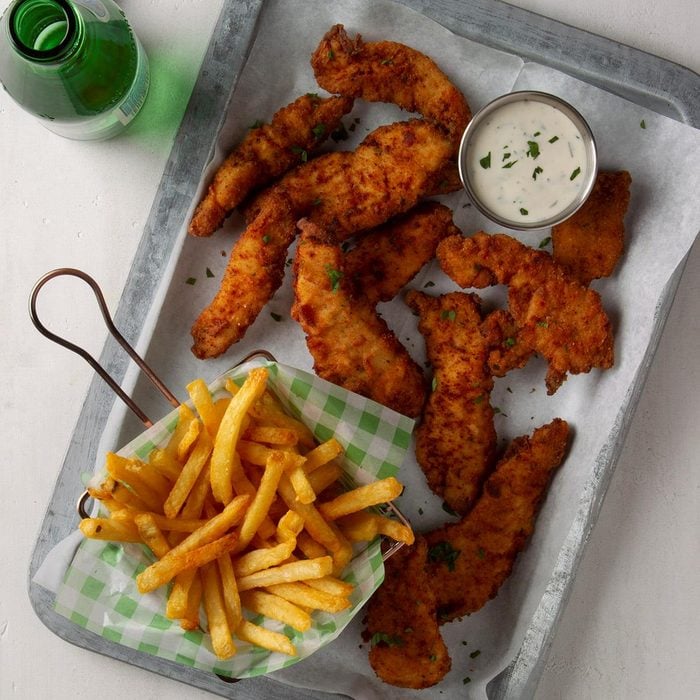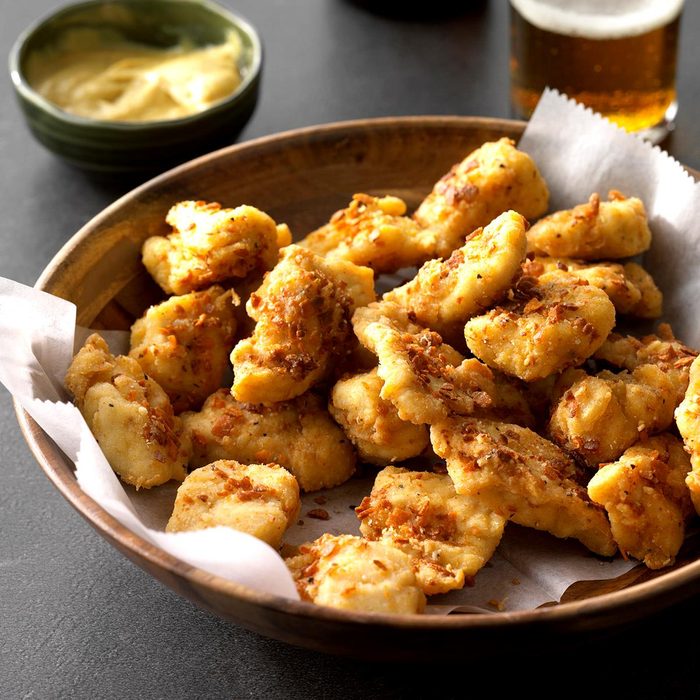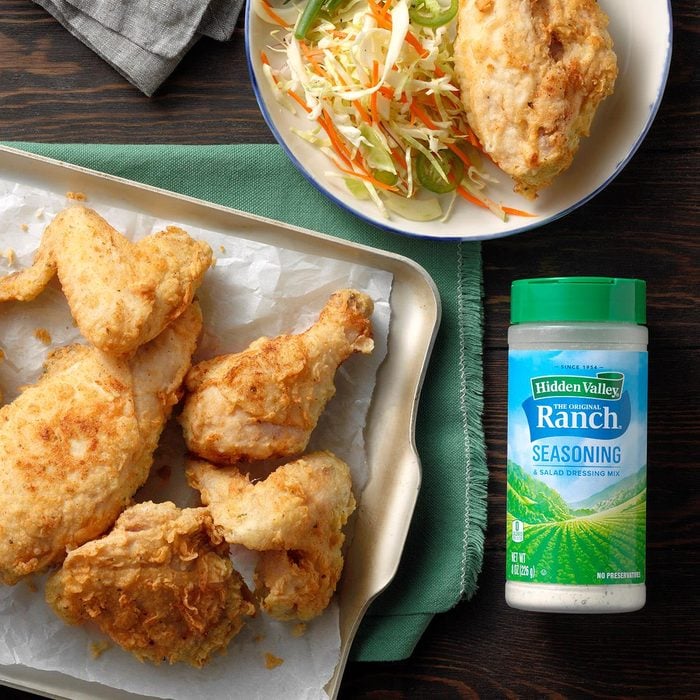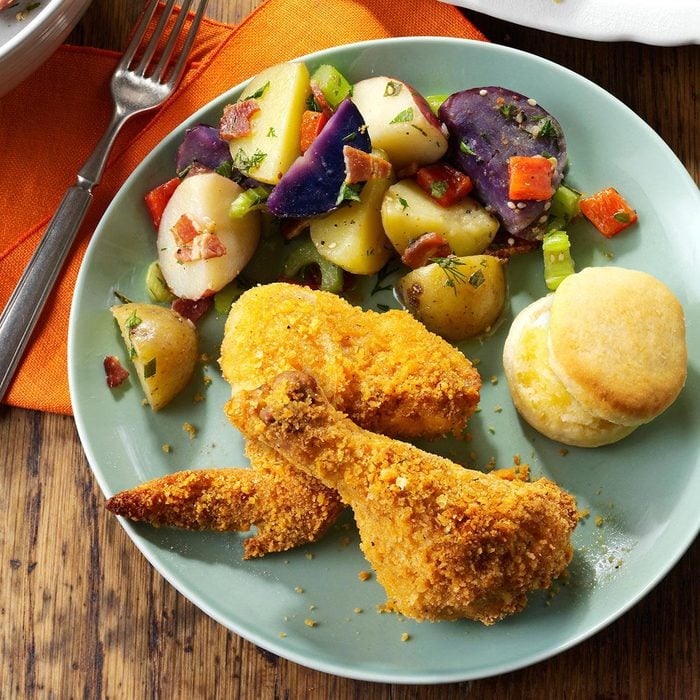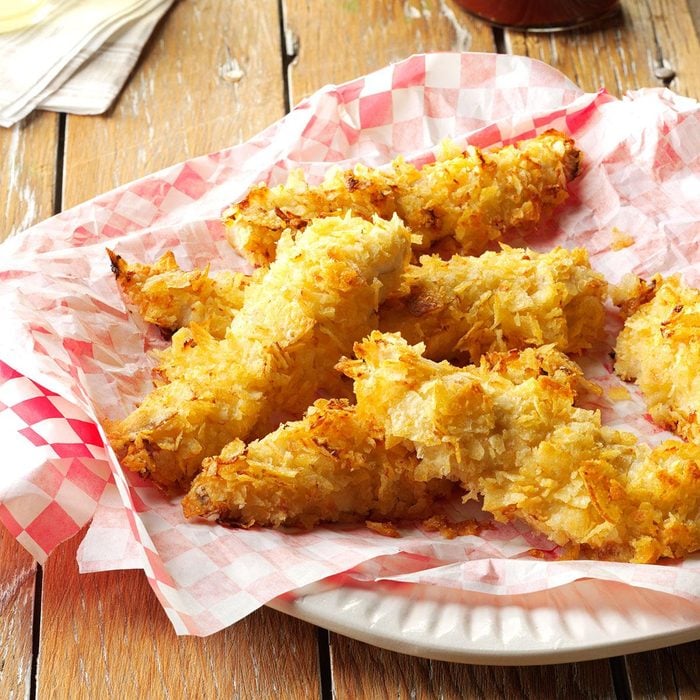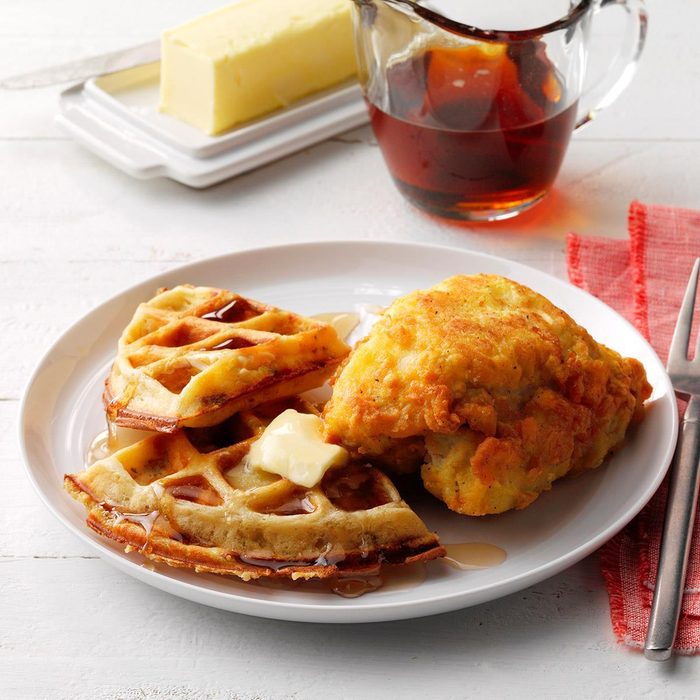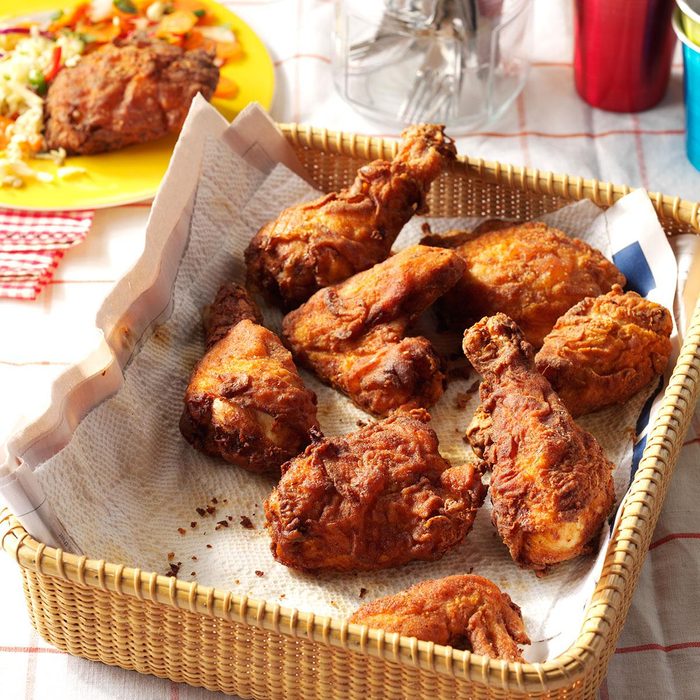The Best Oils for Frying, According to a Chef
Updated: May 21, 2024
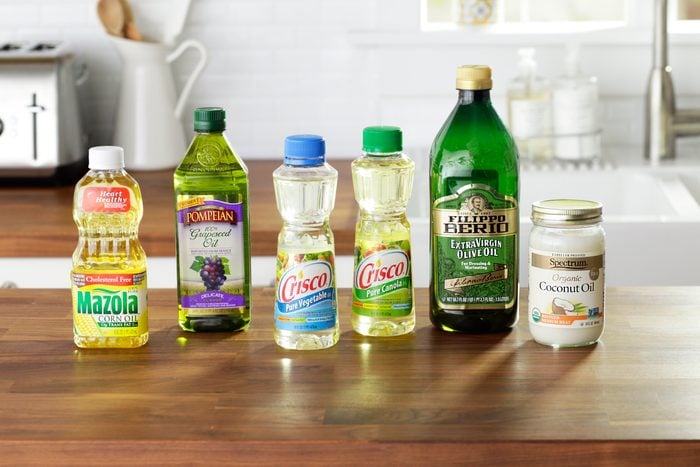
There are several factors to consider when deciding on the best oil for frying, but the answer is quite simple.
Our editors and experts handpick every product we feature. We may earn a commission from your purchases.Learn more.
When we think of fried food, deep-fried foods immediately come to mind: fried shrimp, deep-fried turkey, french fries, tempura veggies, crispy fried chicken—it’s all good, right? Of course, it is! But the world of frying goes beyond fully submerging foods in oil. Some of our favorite recipes involve sauteing, stir-frying and pan-frying (also called shallow frying, a technique used for making potato latkes). And we would be remiss if we forgot to include the air fryer as one of our new favorite frying methods!
So how do we choose the best oil for frying to perfect all these delicious goodies? The cooking oil aisle at the grocery store presents a wide variety, but do different oils affect the taste of foods cooked in them? Do they react differently to the higher temperatures needed for frying? Let’s find out.
All About Smoke Point
One of the first steps in learning how to deep-fry at home with confidence is understanding the smoke point: the temperature at which the oil begins to break down and start smoking. You’ll want to choose an oil with a high smoke point as you cook at higher temperatures. Otherwise, the oil can obtain a rancid, unpleasant taste and spoil the flavor of the foods you cook in it. Not to mention setting your smoke detector off and putting you in panic mode.
According to our deep frying temperature chart, most deep frying uses oil temperatures somewhere between 350 to 375°F. This temperature allows the breading to crisp up quickly so it doesn’t absorb the oil and become greasy. It also isn’t so high that it burns the food’s exterior before the interior cooks through.
When it comes to pan frying, sauteing, stir-frying and air-frying, the cooking temperatures are much higher. Depending on the recipe, that might be anywhere between 425 to 500°F.
The Best Oil for Frying
In addition to smoke point, you’ll also want to consider flavor and price. Most of the time, we choose neutral oils for frying because they don’t impart any flavor to the fried food. Of course, you may opt for a flavorful oil like peanut oil when you want to layer nutty flavor into dishes like old-fashioned fried green tomatoes.
Price certainly comes into play when preparing deep-fried foods. This cooking method requires a lot of oil—the food must be fully submerged in hot oil—making inexpensive oils the preferred choice.
It’s worth noting that we haven’t included “vegetable oil” on this list. This type of oil is either a blend of oils or a generic term used by manufacturers for their packaging, so the smoke point will vary depending on the brand you get. Look on the packaging for the specific smoke point and use vegetable oil like any of the neutral-flavored oils listed below.
Avocado oil
- Smoke point: 520°F
- Best Use: Any kind of frying
Avocado oil is a fantastic choice for all types of frying because it has the highest smoke point of all our suggestions. The oil is mostly neutral tasting, but does impart a light avocado flavor with a hint of sweetness. That makes it our go-to choice when making fried desserts, but we also love it for savory dishes.
The downside with avocado oil is that it can be significantly more expensive than other oils. If you like cooking with avocado oil, skip the small bottles and choose a 33.8-fluid-ounce bottle instead to reduce the price to about $11 ($0.34 per ounce).
Safflower oil
- Smoke point: 475°F
- Best Use: Any kind of frying
If you love avocado oil’s high smoke point, but not the flavor, safflower oil is for you. Safflower has a neutral flavor, which makes it perfect for frying anything from Southern fried chicken strips to delicate eggplant fries. It also happens to be one of the healthiest oils for frying food.
Like avocado oil, safflower oil is a little on the expensive side. The most economical option is to buy it in a 128-ounce jug, which runs you about $37 ($0.29 per ounce).
Peanut oil
- Smoke point: 450°F
- Best Use: Deep frying or stir-frying
Peanut oil is a popular choice for frying, thanks to its high smoke point and nutty flavor. In fact, it’s the go-to oil for fast food restaurant Five Guys, which is why their French fries are so delicious and buttery. Peanut oil is also decently economical, with a 128-ounce jug ringing in around $25 ($0.20 per ounce).
Soybean oil
- Smoke point: 450°F
- Best Use: Deep frying
Soybean oil is a type of neutral-flavored vegetable oil, so it’s a wonderful option for deep frying. Cook anything from breaded shrimp to traditional funnel cakes without adding any competing flavors. The best part is, a 128-ounce jug will only set you back $20 (or $0.15 per ounce).
Corn oil
- Smoke point: 450°F
- Best Use: Deep frying
Like soybean oil, corn oil is a neutral, high smoke point oil that’s very affordable. When you’re frying in bulk, corn oil is one of the most affordable options with a gallon container costing just $15 (or $0.12 per ounce).
Sunflower oil
- Smoke point: 450°F
- Best Use: Any kind of frying
With a slightly nutty flavor, sunflower is wonderful when frying doughnuts, fritters and rosettes, though it also works well with more savory foods like fried asparagus. Sunflower oil is a little more expensive than other oils at this smoke point, with a gallon jug running you about $33 ($0.26 per ounce).
Cottonseed oil
- Smoke point: 420°F
- Best Use: Deep frying
This is an uncommon choice at the grocery store, but it’s used in many fast food spots. Rumor has it that Café du Monde in New Orleans uses it to make their famous beignets. Since it’s less popular at the store, it tends to be more expensive, and a 96-ounce container will put you back about $26 ($0.27 per ounce).
Canola oil
- Smoke point: 400°F
- Best Use: Any type of frying
Canola oil is one of the best choices when frying (and it’s our top choice as the best oil to fry fish). It has a neutral flavor, and it’s quite affordable, particularly if you are preparing large amounts of food. A gallon of canola is usually around $20 ($0.15 per ounce).
Cooking Spray
- Smoke point: Varies
- Best Use: Air frying
Cooking spray is our top choice as the best oil for air-fryer. You only need a small amount of oil to crisp foods in this gadget and make them look golden, and spray or aerosol oils are much better at evenly distributing oil than traditional jars or jugs. The price depends on the brand, as different brands use different oils.
If you want to skip the grocery store, use a refillable oil spray bottle and fill it with the oil of your choice.
Oils to Skip When Frying
Some of the best cooking oils have a low smoke point, so you’ll want to avoid these oils when frying. That means extra virgin olive oil (smoke point of 325°F), coconut oil (350ºF), flaxseed oil (220ºF) and unrefined oils aren’t as suitable for frying.
Let’s also go over the basics of olive oil vs. extra virgin olive oil, and learn when it’s best to choose one over the other.
These oils can be on the pricier side, too, so you might want to save them for applications where you’ll really taste them, as in salad dressings, drizzling or as a dip for freshly baked whole wheat french bread.
Butter (300°F), lard (374°F) and vegetable shortening (360°F) also have low smoke points that make them better suited for baking and roasting. If really want a buttery flavor in your food, melt some butter into your dish once it’s finished cooking.
Now that you know which oils to fry with, learn how to properly dispose of frying oil.





















